Healthcare CFOs Look Forward to Value-Based Care, Consumerism
Healthcare CFOs need to be strategic partners, not just financial gatekeepers, for their organizations to succeed under value-based care and other new ways of doing business.

Source: Getty Images
- Chief financial officers are an organization’s financial gatekeeper, looking back at data to understand company performance, set and keep budgets, manage risk, and track cash flow. While these lookbacks ensure the company remains competitive, innovative, and ultimately open, healthcare CFOs are finding that the traditional role isn’t cutting it in the face of value-based care, consumerism, and a host of new business challenges.
Health systems, hospitals, and physician practices alike are up against a rapidly changing environment. What healthcare CFOs once relied on to keep doors open — keeping patients in hospital beds and prescribing revenue-generating tests and services — is no longer how the healthcare business works.
A shift in the healthcare paradigm
Provider revenue is shifting from the straightforward fee-for-service model to payments based on the value of care delivered. Technological advancements have also enabled non-traditional companies like Amazon, Apple, and Google to carve out space in healthcare markets, creating significant disruption.
In the face of new business challenges, healthcare CFOs are seeing their operating income fall or, at the most, break even. For healthcare CFOs, that means the old way of managing finances is not working in the current environment.
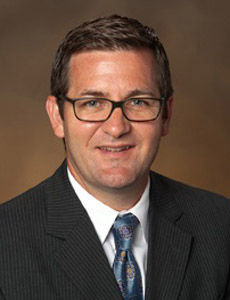
Michael Allen
Source: OSF Healthcare“In the changing business environment, you can't have all the finance folks working in rearview mirrors anymore. That doesn’t give us anything except what happened,” said Michael Allen, the CFO of OSF HealthCare, an integrated health system with 124 locations, including 13 hospitals, throughout Illinois and Michigan.
Healthcare CFOs should be looking forward to the future.
“We’re now in the business of looking ahead, especially in terms of multi-year planning,” Jennifer Alvey, senior vice president and CFO of Indiana University (IU) Health stated. “Strategically, where should we be headed? Where do we have potential market share or opportunities to be a differentiator? The CFO is providing a lot more detailed data on what opportunities there are going forward.”
Provider organizations have many opportunities to thrive in the new environment. The rise of value-based care, consumerism, and technology alone provide organizations with the ability to differentiate themselves from their peers and deliver the type of care that leads to long-term quality improvements and cost savings.
Healthcare CFOs play a major role in seizing these opportunities if they can get away from being labeled the “CF-No,” according to Allen. The finance executives should focus more on putting providers on the path to yes, helping them to develop innovative strategies that align with value-based care, consumerism, and other future trends.

Source: OSF Healthcare
Value-based care requires strategic thinking
The transition to value-based care and reimbursement is one of, if not the greatest, business challenges in healthcare today.
Since the implementation of the Affordable Care Act in 2010, the industry has committed to shifting provider payments from volume to value. But the migration to value-based care has been slow. According to the most recent data from the Health Care Payment Learning & Action Network (LAN), 41 percent of revenue was still tied to fee-for-service in 2017.
Providers metaphorically have a foot in two canoes, with a significant portion of business tied to the old way of getting paid and the rest attached to new, innovative payment models. In many ways, this is exactly the position healthcare CFOs are finding themselves in.
Fee-for-service success hinges on healthcare CFOs understanding past performance to maximize revenue whereas value-based care requires a more forward-looking, strategic mindset to get paid. Providers must be able to predict patient costs, measure outcomes, and improve population health to not only qualify for incentive payments but also to avoid financial penalties in some models.
“Value-based care is the right thing to be doing from all perspectives. But it is a change from how we're running and thinking about key metrics today,” explained Ric Magnuson, CFO of Minnesota-based Allina Health. “We still talk about how busy we are, how full we are, but under our value-based contracts, we’re looking at outcomes and consumers. You have to shift your mind from wanting every bed full in the hospital to asking about how to best care for a population.”
That mindset is a significant shift for the healthcare CFO, Alvey added.
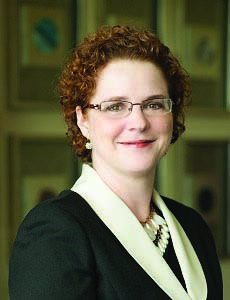
Jennifer Alvey
Source: IU Health"I am now always thinking about the care of our patients, and as a financial person, that's a lot more exciting than thinking about how much volume we've done,” she said. That mindset is enabling Alvey and her team at IU Health to layer value-based care and its financial incentives into profit and loss statements, connecting the financial team with the organization’s mission and enabling them to do a lot more with where the organization should be headed rather than where it’s been, she said.
Getting the CFO on board with value-based care is going to become increasingly important as the industry shifts more revenue away from fee-for-service and implements more sophisticated alternative payment models.
The Centers for Medicare & Medicaid Services (CMS) and other payers are pushing provider organizations to assume greater financial risk under value-based care models. By shifting risk to providers, industry leaders aim to significantly reduce costs while improving care quality, patient satisfaction, and the overall care experience.
However, provider organizations, and especially their CFOs, are hesitant to take on financial risk. A recent survey conducted by consulting firm Kaufman Hall found that only 13 percent of healthcare CFOs and other senior finance executives felt prepared to manage evolving payment and care delivery models.
Healthcare CFOs can help their organizations handle the new business model by better understanding their market, advised Patrick Holland, CFO of Atrius Health, a non-profit system of 31 medical practices in Massachusetts with three-quarters of its revenue under full-risk contracts.
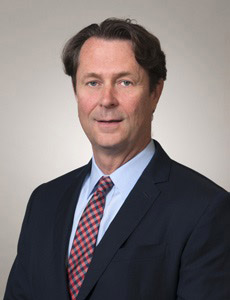
Patrick Holland
Source: Atrius Health“As a CFO, anticipating where the value-based care market is heading is really important,” he said. “For us, we are heavy in risk-based models right now. But the insurance design is influencing performance. Success requires more analytics and less of the CFO role in technical terms. We need to understand how the population under these risk-based models are buying insurance and how that changes. That will influence how they interact with primary and specialty care and how they will intersect with our practice.”
Developing closer relationships with payers is key to Atrius’ strategy for understanding their market and positioning themselves for success in risk-based care. For example, the health system recently co-created an advanced alternative payment model with Blue Cross Blue Shield of Massachusetts under which Atrius Health receives a global budget payment for Blue Cross patients in commercial preferred provider organization (PPO), health maintenance organization (HMO), and Medicare plans.
By shifting Blue Cross patients to a risk-based model, Atrius is better able to control how the patient interacts with the healthcare system, leading to improved care coordination, patient outcomes, and cost performance.
“A big part of what I've been trying to do since coming to Atrius is working with our key health plan partners. I’m aiming to develop a deeper partnership compared to the more transactional, contractual relationship,” Holland explained. “We are working together to meet the needs of the healthcare purchasers in a more cost-effective, higher-quality way.”
And to Holland, getting closer to the one purchasing healthcare is the real key to success moving forward.
Getting closer to the consumer
Meeting the needs and demands of healthcare consumers is essential to aligning value-based care and other recent trends, such as high-deductible health plans. While new care models require patient engagement and care coordination, high-deductible health plans, greater cost-sharing arrangements, and other insurance designs are incenting consumers to consider the value of care when making healthcare decisions.
To manage the rise in healthcare consumerism, organizations must ensure their providers and staff are not only delivering high-quality, low-cost care that leads to improved outcomes and population health, but also a care experience that satisfies the expectations of patients. Failing to do so can impact the billing cycle, including delayed or missed payments from patients, according to a survey of 500 healthcare consumers conducted by Conannce.
“Consumerism in healthcare is impacting our billing cycle,” OSF Healthcare’s Allen stated. “From that perspective, we can very well follow a great clinical episode and ruin that with a bad experience from our billing processes and revenue cycle work.”
Healthcare CFOs are getting closer to the patient as a result, Alvey added.
“The patient financial navigation journey is really important to me,” she said. “My personal passion is connecting with our patients and improving their experience by giving them more information and ensuring their care is affordable. That’s very different from what people would have said about financial folks in the past. We are now focused on the care we give and taking care of our patients in a way that they can afford.”
Creating a modern consumer experience is key to achieving affordability and patient satisfaction. Healthcare consumers with more skin in the game are seeking more a retail-like experience, meaning finance teams need to be providing price transparency, out-of-pocket cost estimates, online pill pay capabilities, and other tools that allow consumers to take control of their own experience.
“As an industry, we need to make the front-end experience easier by helping patients get through the process and providing them with as many self-service options as possible, so they don't have to wait for us to solve something they probably could have done themselves if we gave them the tools and made it easier,” Allen said.
Embracing digital health is a key way provider organizations are making consumer-friendly changes.
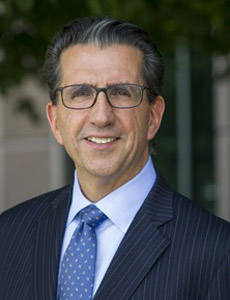
Dominic Nakis
Source: Advocate Aurora Health“Through digitalization, we can support the consumer's experience, whether it is helping people register for a visit, pay their bill, or see their charges on their device,” said Dominic Nakis, CFO of Advocate Aurora Health in Illinois and Wisconsin.
Technology can do wonders for the consumer experience, but provider organizations are still struggling to deliver an automated experience. Ninety percent of providers recently reported using paper and manual processes to collect patient payments. Furthermore, consumers in the Connance survey identified self-service portals as their top business office process change, indicating a lack of such tools in offices currently.
CFOs can lead the digitization charge, however, optimizing consumer experience along the way.
“Digital transformation for the CFO is about partnering with the leader over an area and saying there are traditional areas of finance that can benefit from digitalization,” Nakis stated. Consequently, CFOs need to be more aware and knowledgeable about how technology “could impact the provision of health and wellness services and for the organization’s processes,” he added.
How technology is impacting the CFO
Technology has always been a staple in the CFO’s toolbox. CFOs use IT systems on a daily basis to monitor financial performance, create reports, develop budgets, and forecast the future state of the organization.
Using IT systems and data to perform key functions is unlikely to change, but CFOs are finding that their technology can be used for much more than financial lookbacks. CFO offices are bolstering their technology investments to become more strategic and forward-looking.
“A big part of my role is providing good information on what our opportunities might be,” Alvey explained. “So, we have had to beef up a lot more resources in our pro forma teams and our cost accounting to be able to better understand our own financial data, and that's not something that a lot of systems have been good about in the US.”
The information coming from new technology investments is especially helping IU Health with its transition to value-based care.
“We are making sure that we have good information to make good decisions,” she stressed. "With the fee-for-service model, you can look at an encounter and its cost and revenue. But as you move into value-based care, it's more complicated than that. For example, how do you take the ACO gain share and apply that revenue? You need to have more people who really understand how all the different aspects of the business move to be able to pull the data together.”
Armed with reliable data, Alvey has become more of an advisor to the organization, providing the information leaders and providers need to make good value-based care decisions.
Technology and data analytics have also allowed OSF Healthcare’s CFO to work closely with other executives and providers within the organization. With more readily available data, the health system invested in analytics tools and teams that allow the CFO’s office to move away from strictly number-crunching.
“Automating the work of finance changes finance jobs by moving us further into the business partner role more so than the strict accounting and spreadsheet expert,” Allen said. “Our work is now elbow-to-elbow with the rest of the organization to make sure that we are seeing all the opportunities, reducing all the waste we can, trying to create capacity for the organization, and helping people understand the numbers.”
Being able to become more of a business partner has led to signification innovation at Allina Health, Magnuson noted. The CFO now leads an innovation center through which Allina Health invests in venture capital funds to help create the next generation of healthcare technology.
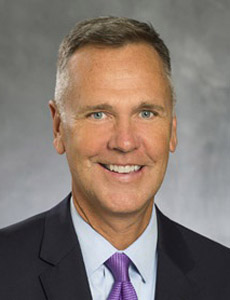
Ric Magnuson
Source: Allina HeathOne of those investments resulted in Allina becoming a limited partner with Livongo, a health IT company offering a chronic disease management platform. Allina uses the technology to manage the quality of care and costs associated with its own employee population. Livongo also went public in July, making Allina Health’s investment worth more, Magnuson added.
“That one investment probably paid for our investment in the entire venture capital fund, and we expect to see improvements in our financial performance and better outcomes for our employees and reduced costs trends there. Those are the kinds of things that we want to get out of the funds,” he said.
The innovation center is now a staple of Allina’s financial strategy. Through strategic investments in health IT companies, the health system is disrupting their business model in the face of new and rising competition and capitalizing on new revenue streams as reimbursement rates fall.
“From a financial perspective, we see this as a very relevant part of our business model three, four, and five years out, bringing in revenue streams that we don't have, improving our operating performance, and potentially getting equity positions to strengthen our organization,” Magnuson said.

Source: Allina Health
The evolving role of the CFO
The role of the healthcare CFO is evolving as provider organizations encounter new ways of doing business. Rather than being stuck behind the calculator, CFOs are becoming strategic business partners who are leading change with the organization.
“The tactical skillset becomes less important because as an organization gets larger and more sophisticated, the tactical and routine work will get automated in some cases, so the finance role becomes more about how we see opportunities to connect and fit them together,” Allen said.
As a result, the role will become “more external-facing to be able to manage change within the organization and provide those leadership skills and abilities, so people become comfortable with change and new operating norms,” Nakis added.
A healthcare CFO may not have had to be a “people-person” in the past to succeed in their role, but new challenges require the finance executives to have emotional intelligence as well as a high IQ, Allen explained. “You need to have a good balance of both to navigate as a CFO nowadays,” he said.
Healthcare CFOs can use those new skills to make the ultimate transformation facing the finance executive role: becoming the organization’s storyteller.
The CFO’s new forward-looking perspective enables the executive to understand where the healthcare industry is headed, how the local market is likely to respond, and what the organization will need to thrive.
With such a broad view, CFOs can start to move the organization in the right direction by inspiring other executives, department heads, frontline providers, office staff, and others to change their workflows. Armed with more data, the executives can also back up their proposal for change with evidence.
“My job is to help my colleagues understand the financial impact and where the market and our organization are going. I shape the story so that they can see it, too, because collectively we need the whole team to be moving in a similar way," Magnuson concluded.
